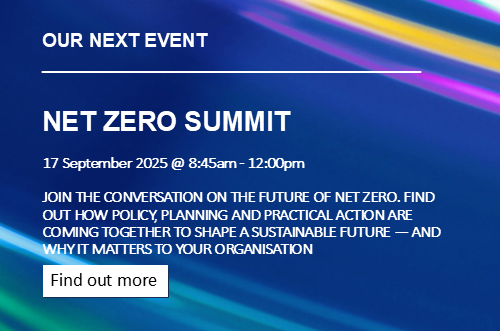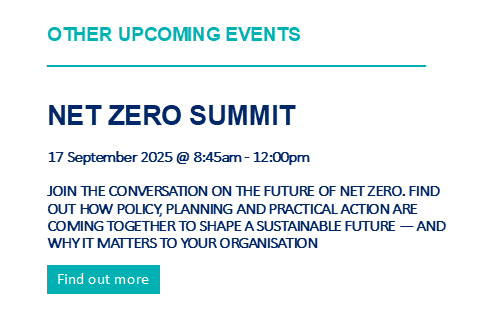OFTO Build Model: Ofgem’s shift to early competition
![]() Steve Gummer and Jemima Allison provide insight into Ofgem's policy shift to move away from developing a late competition model for Offshore Transmission Owners.
Steve Gummer and Jemima Allison provide insight into Ofgem's policy shift to move away from developing a late competition model for Offshore Transmission Owners.
- Details
In a significant policy update published on 9 December 2024 (“Policy Update”), Ofgem announced its intention to move away from developing a late competition model for Offshore Transmission Owners (“OFTOs”), in favour of an early competition approach.
This shift marks an important evolution in how offshore transmission infrastructure will be delivered in the future.
Background
The OFTO regime, established in 2009, created a framework where transmission assets connecting offshore wind farms to the onshore grid are owned and operated by OFTOs.
OFTOs are competitively appointed entities that hold transmission licences granted by Ofgem. They own the transmission infrastructure associated with offshore wind farms, such as offshore substations, export cables, and onshore connections.
Generators are prohibited from owning and operating transmission assets once construction is complete.
As such, these assets are transferred to an OFTO post-construction through Ofgem’s competitive tender process. This is known as the ‘generator build’ or ‘developer build’ model.
This model has successfully attracted significant investment to date – across ten tender rounds, the regime is estimated to deliver more than £12 billion of investment.
However, as the UK pursues its target of up to 50 GW of installed offshore wind capacity by 2030, the traditional point-to-point connections and siloed project planning approach is increasingly seen as less suitable.
Specifically, Ofgem and the National Energy System Operator (“NESO”) have identified that connecting each new offshore wind development to the grid through standalone connections would result in higher costs for customers.
Additionally, the continued expansion of point-to-point offshore transmission infrastructure could negatively impact local communities and natural habitats.
The OFTO build model
To mitigate these risks, NESO introduced the Holistic Network Design (“HND”) policy for future offshore transmission assets.
The HND, along with the subsequent follow-up exercise, known as the HNDFUE, seeks to connect offshore wind developments in close proximity, by utilising shared offshore and onshore transmission infrastructure.
This enables power to be brought to the grid cohesively, maximising benefit for customers, communities and the environment.
In this context, where transmission infrastructure is shared by multiple developers, Ofgem considers that OFTOs are best placed to take on the responsibility of constructing these assets.
Under this OFTO build model, OFTOs would build the transmission assets instead of acquiring them post-construction.
This represents a significant evolution from the current regime and raises complex questions about risk allocation, project dependencies, and procurement approaches.
Ofgem and NESO have undertaken several consultations on shared transmission infrastructure and the OFTO build model, with the most recent published by Ofgem in April 2024 (“Consultation”).
Under Ofgem’s proposed model, generators would retain responsibility for key preliminary work, including detailed design and consenting, while OFTOs would take on responsibility for asset construction and operation once the preliminary work is completed.
This is referred to as the late OFTO build model, in which OFTO involvement occurs later in the project’s development.
Ofgem initially favoured the late OFTO build model due to its shorter development and implementation timeframe – especially in light of the Clean Power 2030 targets.
However, recent industry developments and stakeholder feedback to the Consultation prompted Ofgem to reconsider the suitability of an early competition OFTO build model.
On 9 December 2024, Ofgem announced its intention to shift from the late OFTO build model to an early competition OFTO build model.
Key Factors Driving the Move to Early Competition
Ofgem’s reconsideration of the OFTO build model is driven by several key factors:
- Change in project timelines: While Ofgem initially decided to develop the late competition model, it considered that an early competition model would be challenging due to the estimated three-to-four-year project timeline required to develop and implement an early competition tender. This delay could hinder projects that required OFTO build.
However, since Ofgem’s decision in March 2023 on delivery models for non-radial offshore transmission assets, it has become clear that there are fewer non-radial projects than expected, with later connection dates in the early-to-mid 2030s.
This reduces time pressures and means these projects now fall outside the scope of Clean Power 2030.
- Strong stakeholder feedback on interface issues: Stakeholder feedback on the Consultation strongly favoured earlier OFTO involvement to better manage interface and coordination issues between generators and OFTOs.
These issues are more prevalent under a late competition model, where project ownership is transferred from the generator during the middle of development. Earlier involvement allows the OFTO to own and implement the project from an early stage, reducing these risks.
- Supply chain considerations: Stakeholder responses to the Consultation also highlighted that earlier OFTO engagement would improve supply chain management, particularly for HVDC (high-voltage direct current) systems, which require seven to ten years of lead time.
Earlier OFTO procurement would allow for earlier bidder engagement with the supply chain, minimising the risk of delays in project delivery.
The New Early Competition Approach
Under the proposed early OFTO build model, OFTOs would be appointed much earlier in the process to take responsibility for:
- finalising detailed design;
- submitting consenting applications;
- managing procurement from supply chains; and
- constructing and operating the offshore transmission assets.
In its recent Policy Update, Ofgem outlines key issues that will need to be considered as the early build model is developed further. These include:
- Identifying use cases: Ofgem emphasises that the design of assets in a non-radial network may vary depending on the intended functions.
Therefore, the OFTO build model must be flexible enough to accommodate coordination and commercial issues arising from different use cases.
Ofgem plans to first identify pilot project or ‘use cases’ and then explore the commercial and regulatory challenges that may arise in each case.
- Managing the risk of late delivery: The risk of late delivery of transmission assets is a significant concern for generators. In its Policy Update, Ofgem outlines several proposed solutions to manage this risk.
These include:
- offering financial incentives for OFTOs to meet delivery timelines (e.g., penalties or rewards for missing or reaching agreed delivery deadlines);
- having generators and OFTOs enter into multi-party agreements to manage delays; and
- working with NESO to explore the feasibility of fixed payments to generators for lost electricity export if the OFTO misses an agreed delivery date.
- Revenue models: Ofgem acknowledges that the current approach, under which OFTOs bid for a fixed tender revenue stream, is unsuitable for the early OFTO build model. Since OFTOs would be appointed much earlier in the process, it would be challenging to estimate pricing accurately.
Ofgem is considering two options for this:
- running a more price-focused competition where the lowest price wins; and
- adopting either a regulated asset base (RAB) model or the regime used for determining interconnector cap and floor revenues, incumbent transmission owners, the Thames Tideway Tunnel, and Sizewell C.
Under this second option, the cost would evolve throughout development, with the competition focusing more on technical capabilities than price.
Next Steps
Ofgem is continuing to explore the early OFTO build model. It intends to work with NESO and generators to identify and confirm pilot projects within the HND and HNDFUE by Q2 of 2025.
Where such projects are identified, Ofgem will start developing the early competition build model tailored to these projects, bearing in mind the need for a long-term approach.
Ofgem also intends to engage with industry stakeholders to address key concerns and issues relating to the development of the early OFTO build model, in particular those discussed above.
This shift in approach demonstrates Ofgem’s responsiveness to industry feedback and its commitment to developing a model that better serves the complex needs of coordinated offshore transmission development.
As the UK works towards its ambitious offshore wind targets, the evolution of the OFTO regime represents a vital step toward enabling efficient and coordinated grid connections.
The success of this new approach will be crucial in supporting the next phase of the UK’s energy transition while maintaining the OFTO regime’s track record of attracting investment and delivering value for customers.
Steve Gummer is a Partner and Jemima Allison is a Junior Associate at Sharpe Pritchard LLP.
For further insight and resources on local government legal issues from Sharpe Pritchard, please visit the SharpeEdge page by clicking on the banner below.
This video is for general awareness only and does not constitute legal or professional advice. The law may have changed since this page was first published. If you would like further advice and assistance in relation to any issue raised in this article, please contact us by telephone or email enquiries@sharpepritchard.co.uk.
|
Click here to view our archived articles or search below.
|
|
ABOUT SHARPE PRITCHARD
We are a national firm of public law specialists, serving local authorities, other public sector organisations and registered social landlords, as well as commercial clients and the third sector. Our team advises on a wide range of public law matters, spanning electoral law, procurement, construction, infrastructure, data protection and information law, planning and dispute resolution, to name a few key specialisms. All public sector organisations have a route to instruct us through the various frameworks we are appointed to. To find out more about our services, please click here.
|
|
OUR RECENT ARTICLES
October 09, 2025
Twelve New Towns for the FutureJames Goldthorpe and Conrad Turnock summarise the New Towns Taskforce’s report to Government, published on 28th September, and ask - what next?
September 30, 2025
Key updates to the Administrative Court GuideChloe McQuillan and Jonathan Blunden dive into recent amendments to the Administrative Court Judicial Review Guide, exploring what they mean for practitioners.
September 12, 2025
Algorithm and State: Automated decision-making in the UK Public SectorBeatrice Wood explores the impact of Automated Decision making on the UK government and local authority sector.
September 12, 2025
The Nuclear Regulatory Taskforce Interim ReportBridget Newman discusses the report published by the Nuclear Regulatory Taskforce on the UK’s nuclear regulatory framework.
|
|
OUR KEY LOCAL GOVERNMENT CONTACTS
|
||
|
Partner 020 7406 4600 Find out more |
||
|
Partner 020 7406 4600 Find out more |
||
|
Rachel Murray-Smith Partner 020 7406 4600 Find out more |






 Catherine Newman
Catherine Newman